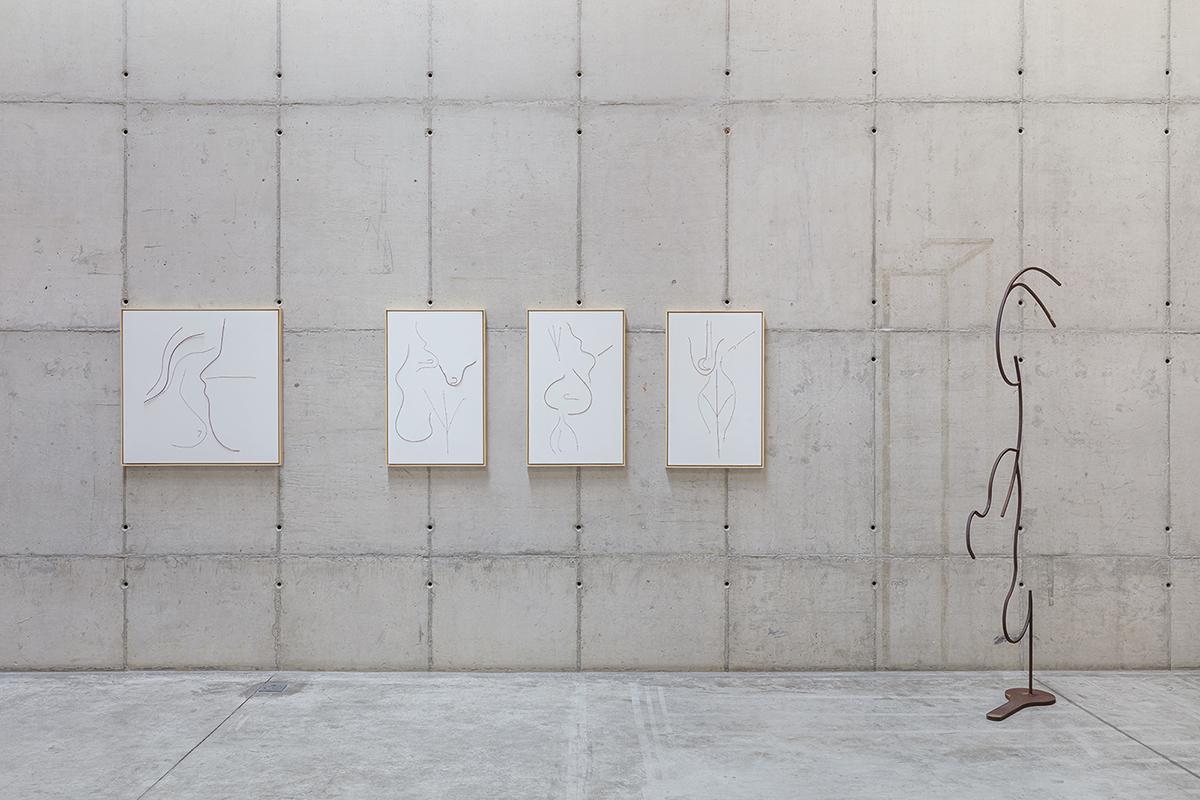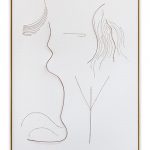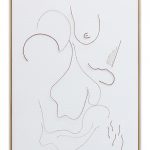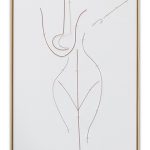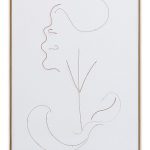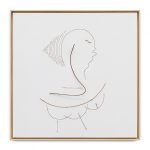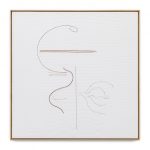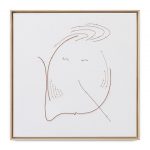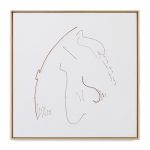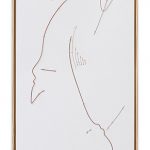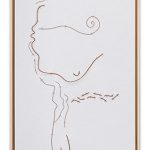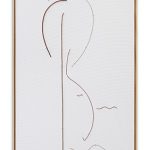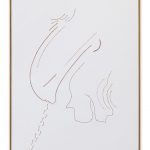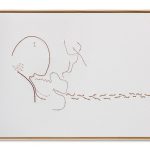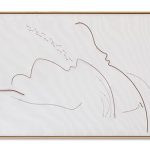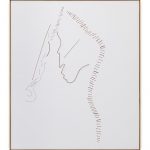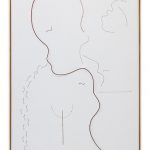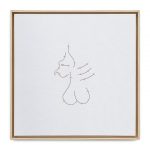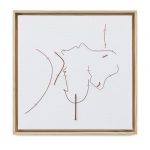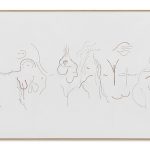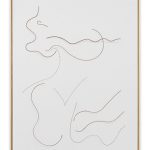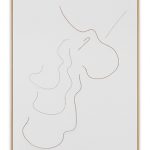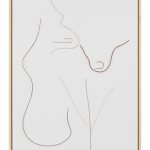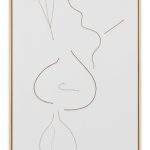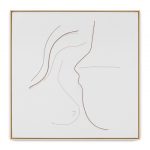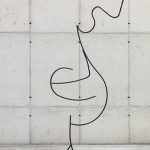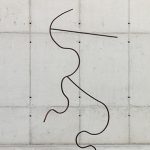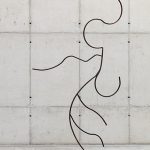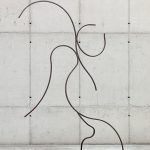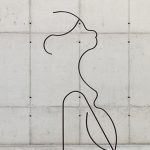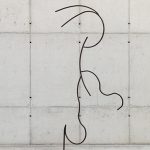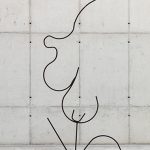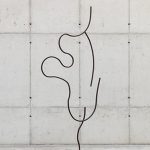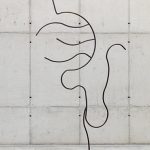Writing about what I learned from “Como colocar ar nas palavras” [How to put air in the words] is, first and foremost, a public exercise in textual sculpting, all that one forges and creates in space and time when one witnesses the birth of form: to bend words in order to bring them into existence, to twist them into shapes which can reveal a path of total abstraction. Thus, any ideal of understanding could never be comprehended without the body and, therefore, without surrender. This is the reason why I choose to use “boundless” words, sighing and pulsating words.
When one sees the artist’s “Coleção de Cadernos” [Notebook Collection] – imbued with her deepest (metallic) memories and the sounds of their reddish strings – we come face to face with the language created by the Bahian artist Rebeca Carapiá. In these optical games, in which shadows – cast by the spotlights which lend the room its shape – shimmer and dance, a question comes to us: what do we really see, and what is left unread in her writing?
Lucas Veiga, the “head specialist”, once told me:
The dissident, racialized black body always surpasses text.
Seeing as the seductive quality of what lies in between the lines is how we understand the artist’s way of expressing herself, we realize that abstraction, and the creation of an apparently intelligible and recognizable script or writing, is essential to the presentation of her first solo exhibition “Como colocar ar nas palavras” [How to put air in the words], an exhibition wherein the artist develops a cosmogony centered on the conflicts between language and body, while also creating strategies which aim to evade the processes of subsumption, fetishization and high-visibility of identity politics explored by the techno-normative racial capital and its consequent ethical effacement in Brazil, especially over the past 50 years.
Carapiá thus rejects categorizations and colonial representations, resorting, rather, to abstraction in order to create a written idiom that eludes all “theme-figure” rules and standards and any predestined form of representation, for what is truly at stake are the imbrications of artistic practice and resistance engendered by racialized, outcast and dissident bodies such as the artist’s. From a historical point of view, she addresses primordial issues that pervade Brazilian contemporary art, making her a prominent voice among the artists of her generation.
Having followed her work from its beginning, my body – in my capacity as mere apprentice – is still imprinted with what the artist calls the deconstruction of feminine geographies, both of which are reflected in the very act and materiality of writing: the convergence of cotton canvases (prepared for painting) with the fineness of copper and the solidity of metal allows us to immerse ourselves fully in her exploration of conflicts, dissident bodies and territories. The relationships she establishes with these materials allude to the working class neighborhood of Uruguai, in the Lower City of Salvador, Bahia, where Carapiá was born and raised.
Because the creation of the sculptures involves soldering and calendaring, both of which are guided by the energies of fire and metal and by the high-performance and physical power requirements of these processes, the forging and folding techniques – which animate the works and also function as a denunciation of the terrible working conditions of laborers in the Lower City of Salvador, all of whom work to sustain the city – are revealed as a form of ancestral knowledge of metal manipulation, which is an important conductor of energy and connector between the visible and the invisible in afro-indigenous cosmogonies.
Wishing that those who read us might also learn something from her, we can point to the fact that her work with metals, and therefore her work with the earth itself, constitutes the the way the artist has found to create her methods of killing the feminine, breaking the bonds of socially-constructed norms which involve the notions of domestication, frailness and delicateness, as well as the interconnections and relations which sustain the history of labor and its perpetual systems. Drawing from her childhood memories of collecting and selling scrap metal, one notices that, despite her attempts at evading figuration, the solidity and toughness of the materials, the exposed beams and structures of that subterranean reality, and the suffocating tides of the Lower City, create a distinct visual landscape which leaves us with the question: since when, and to what women, has physical labor been the only option available as a means of subsistence?
The artist’s process of resignification, the exhibition – which includes of a set of metal sculptures from her “Palavras com ar” [Words With Air] series and pieces which are made with copper on canvas – ultimately challenges the hegemonic discourse of art history, thus broadening our understanding of the artwork by means of an ancestral repertory – which traverses both the visible and invisible aspects of the artist’s professional trajectory – emanating like a secret or a mystery, from its conception down to its final form.
By broadening the horizons of the written word, by rending, bending, drawing and redrawing its lines, Rebeca Carapiá leaves her mark by writing other ways of saying about the difference without explaining it.
Diane Lima, 2020
Curator
